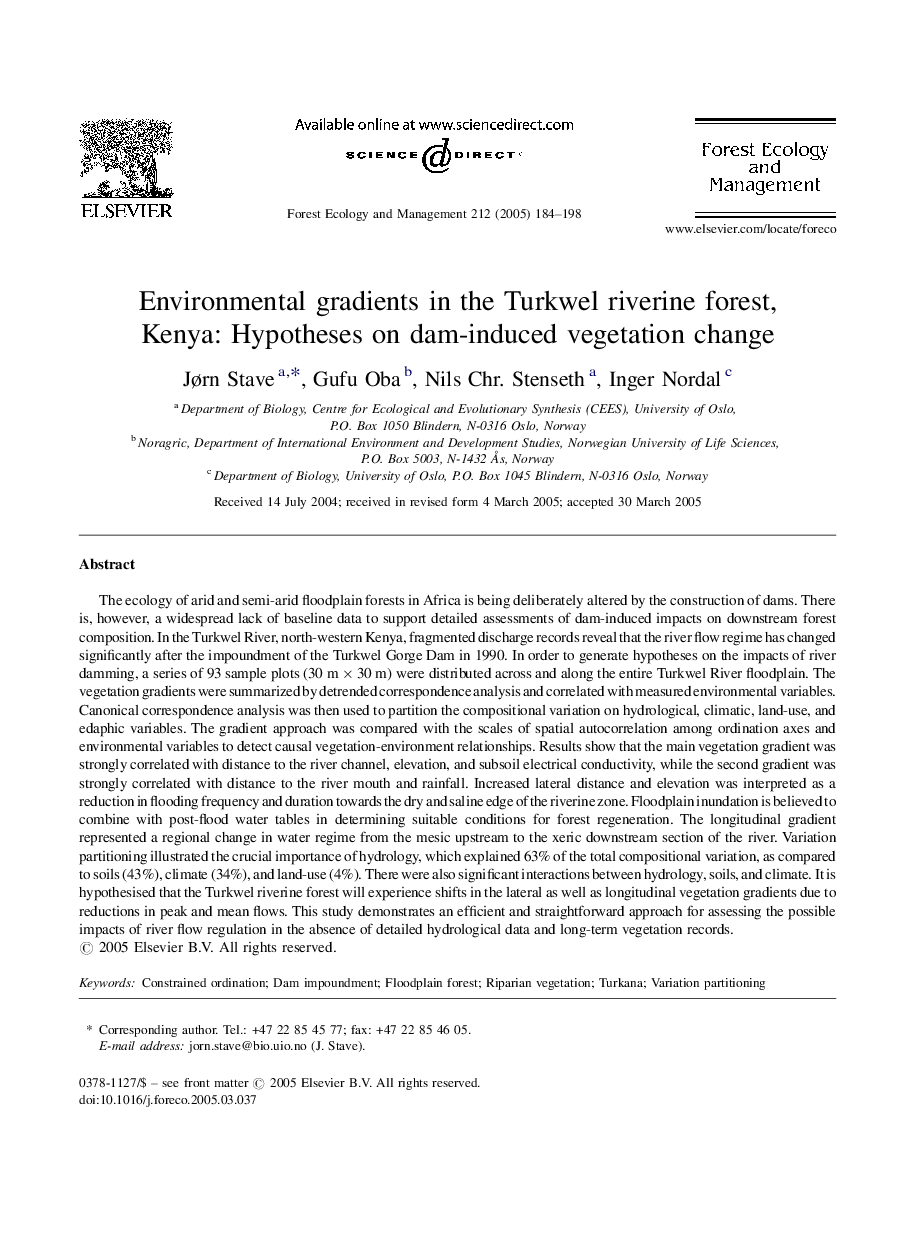| Article ID | Journal | Published Year | Pages | File Type |
|---|---|---|---|---|
| 9620309 | Forest Ecology and Management | 2005 | 15 Pages |
Abstract
The ecology of arid and semi-arid floodplain forests in Africa is being deliberately altered by the construction of dams. There is, however, a widespread lack of baseline data to support detailed assessments of dam-induced impacts on downstream forest composition. In the Turkwel River, north-western Kenya, fragmented discharge records reveal that the river flow regime has changed significantly after the impoundment of the Turkwel Gorge Dam in 1990. In order to generate hypotheses on the impacts of river damming, a series of 93 sample plots (30 m Ã 30 m) were distributed across and along the entire Turkwel River floodplain. The vegetation gradients were summarized by detrended correspondence analysis and correlated with measured environmental variables. Canonical correspondence analysis was then used to partition the compositional variation on hydrological, climatic, land-use, and edaphic variables. The gradient approach was compared with the scales of spatial autocorrelation among ordination axes and environmental variables to detect causal vegetation-environment relationships. Results show that the main vegetation gradient was strongly correlated with distance to the river channel, elevation, and subsoil electrical conductivity, while the second gradient was strongly correlated with distance to the river mouth and rainfall. Increased lateral distance and elevation was interpreted as a reduction in flooding frequency and duration towards the dry and saline edge of the riverine zone. Floodplain inundation is believed to combine with post-flood water tables in determining suitable conditions for forest regeneration. The longitudinal gradient represented a regional change in water regime from the mesic upstream to the xeric downstream section of the river. Variation partitioning illustrated the crucial importance of hydrology, which explained 63% of the total compositional variation, as compared to soils (43%), climate (34%), and land-use (4%). There were also significant interactions between hydrology, soils, and climate. It is hypothesised that the Turkwel riverine forest will experience shifts in the lateral as well as longitudinal vegetation gradients due to reductions in peak and mean flows. This study demonstrates an efficient and straightforward approach for assessing the possible impacts of river flow regulation in the absence of detailed hydrological data and long-term vegetation records.
Related Topics
Life Sciences
Agricultural and Biological Sciences
Ecology, Evolution, Behavior and Systematics
Authors
Jørn Stave, Gufu Oba, Nils Chr. Stenseth, Inger Nordal,
